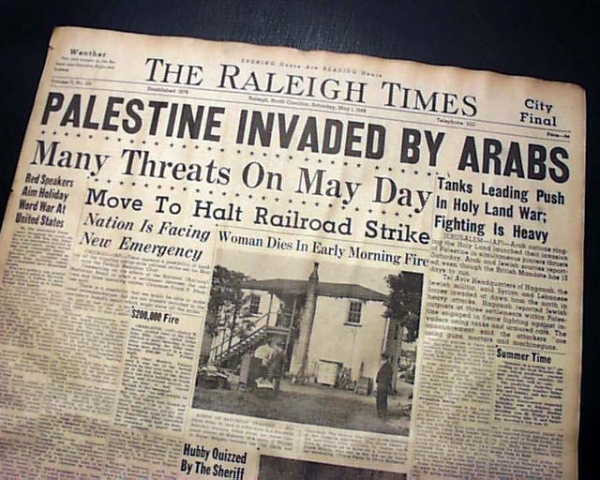On 20 July 1949, Israel’s long and hard fight for independence finally ended after an armistice agreement with Syria was signed. With over 6,000 fallen soldiers and another 15,000 wounded, this was by far the bloodiest war in Israeli history.
The war began after the United Nations General Assembly adopted the Partition Plan in November 1947. The plan called for Great Britain’s former Palestinian mandate to be divided into a Jewish state and an Arab state. However, many rightfully argue that when Palestine was divided into Trans-Jordan and Palestine in 1922, the Arab state had already been created. Nonetheless, the Jews accepted the broken sliver of land they were allocated with glee.
Israel after winning the Arab-Israeli wars; 1948-49: Israel's war of independence. 1956: Suez Crisis. 1967:6-day war. 1973: Yom Kippur War 1982: Lebanon war pic.twitter.com/02tmqd3ZN8
— 💕Framboise מִרְיָם 💕 (@3Myriam1) July 14, 2022
The problem, however, was that while the newly declared 'Israelis' accepted the resolution, the surrounding Arab states regarded it as unfavorable to their communities. They rejected it, issuing evacuation orders to the local Arab population so they would not be in the way of the coming forces. Arab leaders instructed those who were deep in Israel's territory to riot and create civil unrest to distract Israel's army and police from the borders.
It is not a coincidence that one of the n*zi party’s largest platforms was blaming jews for WW1 and the main argument for anti zionism is blaming jews for Israel’s war of independence. It is all because the man who actually started that war, pictured on the left pic.twitter.com/sInJkmqKky
— sarah / שרה (@gefiltefishh) July 11, 2022
Immediately upon the passing of the resolution and in line with the requests of the surrounding Arab countries, violent riots errupted. While approximately 100,000 British troops were still stationed in Israel, they did little to ease the violence because their policy was not to interfere unless British forces or facilities were being targeted.
After Israel declared its independence on 14 May 1948, the riots turned into a full-scale war with Lebanon, Syria, Iraq, and Egypt invading Israel. The war was fought mostly along Israel's borders: Lebanon and Syria from the north, Iraq and the newly formed Jordan from the east, and Egypt from the south. Many local Arabs and other volunteers from Arab countries fought within the borders.
2. Israel won its war of independence using repurposed Nazi weapons provided by Stalin, while the US imposed an arms embargo
— Yair Rosenberg (@Yair_Rosenberg) July 14, 2022
3. Theodor Herzl, the founder of modern Zionism, had a Christmas treehttps://t.co/3tBTV01Oby
Throughout 1949, Israel signed a series of armistice agreements with Egypt, Lebanon, Jordan and Syria. While Iraq did not sign an armistice agreement with Israel, Iraqi forces withdrew from the region in March 1949. As part of the agreements, Egypt and Jordan retained control over the Gaza Strip and the West Bank, respectively. The armistice lines were the ‘De-Facto’ border lines until 1967 when the Six Day War broke out.
Israel declared victory during their war for independence, having increased its territory by about 5,000 square kilometers while withstanding the invasion of several Arab armies. Most importantly, establishing the State of Israel was now an irreversible fact.


